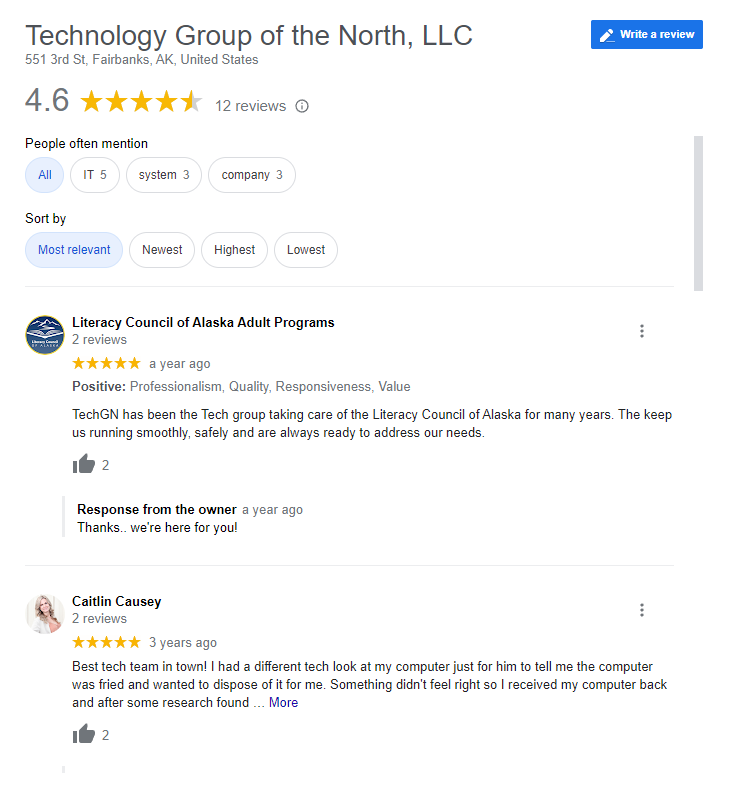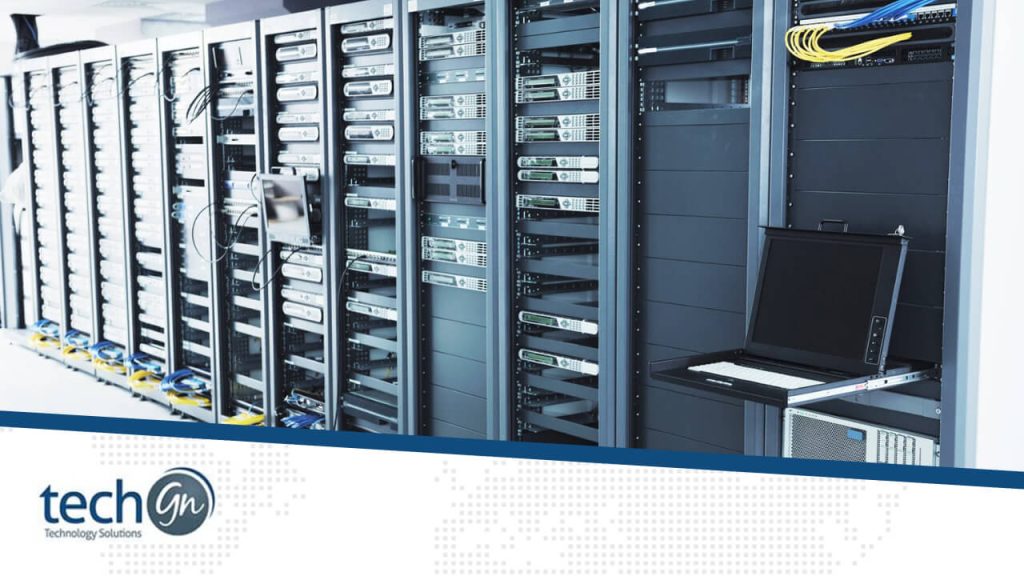In today’s digital age, your server room is the heartbeat of your company’s IT operations. Whether you’re running applications, managing data, or operating VoIP and networking equipment, your infrastructure needs a solid foundation. A well-designed server room setup ensures uptime, security, and scalability, whereas a poorly designed setup can lead to overheating, data loss, and costly downtime.
At TechGN, we help businesses build smart, scalable, and safe infrastructure that performs under pressure. In this guide, we’ll walk you through the three most important components of a reliable server room: cooling, power supply, and cable management.
Why Server Room Setup Matters
Small to medium-sized businesses (SMBs) sometimes treat server rooms as an afterthought—just a closet with blinking lights and fan noise. However, this space does more than just store gear; it protects your business data, connects your employees, and manages your daily operations.
Without proper planning, you risk:
- System crashes due to overheating
- Power outages that corrupt data
- A tangled mess of cables that delays maintenance
Part 1: Server Room Cooling Solutions
Why Cooling Is Critical
Servers generate heat—lots of it. Even a single rack can push out as much heat as a space heater. If your server room isn’t properly cooled, you’ll face overheating, component failure, reduced equipment lifespan, or total shutdowns.
Signs of Poor Cooling:
- Devices running hot to the touch
- Loud fans or emergency shutdowns
- Unexpected slowdowns or reboots
Recommended Cooling Options
1. Dedicated HVAC System
Install a dedicated air conditioning system that runs independently from your office HVAC. This allows for round-the-clock cooling, even during weekends or holidays.
2. In-Rack Cooling
For dense setups, install cooling units directly into or next to racks. These are especially useful in compact server rooms with high thermal loads.
3. Cold Aisle / Hot Aisle Layout
Position your racks in alternating aisles—cold air is directed to server intakes, and hot air is exhausted away. This simple change can dramatically improve airflow efficiency.
4. Environmental Monitoring Tools
Use smart sensors to monitor temperature and humidity 24/7. Alerts can notify your IT team before things go critical.
TechGN Tip:
Keep your server room between 64°F to 80°F (18°C to 27°C) and maintain humidity between 40%–60% for optimal equipment health.
Part 2: Reliable Power Management
Power outages and surges are one of the biggest threats to server hardware and uptime. Even a brief power cut can corrupt files or damage equipment.
Essential Power Setup Components
1. Uninterruptible Power Supply (UPS)
Install a battery backup system that kicks in instantly when the main power goes out. This gives you time to safely shut down equipment or keep it running until generators start.
2. Power Distribution Units (PDUs)
Rack-mounted PDUs distribute electricity safely to all devices in a cabinet. Use metered PDUs to monitor energy use and avoid overloads.
3. Redundant Power Supplies
Many enterprise-grade servers have dual power supplies. Connect each to a separate UPS or power source for redundancy.
4. Surge Protectors and Voltage Regulators
Protect against voltage spikes that can fry your servers. Surge protectors are essential in areas prone to lightning or inconsistent grid supply.
5. Backup Generators
For businesses in disaster-prone areas or with strict uptime needs, a diesel or natural gas generator ensures uninterrupted power.
2. Router or Firewall Failure
Your router manages both internal traffic and your connection to the internet. If your business suddenly can’t get online, the router is a likely culprit.
Signs:
- No internet, even with physical connections
- Can’t access router login page (e.g., 192.168.1.1)
- Frequent restarts or flashing power lights
Fixes:
- Reboot the router and modem
- Check for firmware updates
- Reset to factory settings (only if config backup exists)
- Replace outdated or overheating units
Part 3: Cable Management Best Practices
A cluttered server room with messy cables doesn’t just look bad—it makes maintenance a nightmare and can lead to unplugged or crossed wires that break your network.
The Risks of Poor Cable Management:
- Difficult troubleshooting
- Accidental disconnections
- Overheating due to blocked airflow
- Safety hazards and trip risks
Cable Management Tips from TechGN
1. Use Color Coding
Assign cable colors by function: blue for Ethernet, red for power, yellow for VoIP, and so on. It saves time during repairs or upgrades.
2. Label Every Cable
At both ends! Use durable, heat-resistant labels that won’t peel off over time.
3. Cable Trays and Raceways
Keep cables off the floor by using horizontal and vertical cable trays or raceways. This also improves airflow around racks.
4. Velcro Straps, Not Zip Ties
Velcro is reusable and won’t damage your cables. Avoid plastic zip ties that can over-tighten and crush wires.
5. Separate Power and Data Cables
Keep high-voltage power lines away from data cables to prevent electromagnetic interference (EMI).
6. Leave Slack for Movement
Don’t stretch cables to their limit. Leave extra length in case racks are moved or adjusted.
Server Room Design Layout Tips
When planning the physical layout of your server room, remember these quick wins:
| Design Element | Recommendation |
|---|---|
| Racks | Use standard 19-inch racks with lockable doors |
| Flooring | Raised floors for airflow and cabling below |
| Lighting | Install cool LED lighting with battery backup |
| Access Control | Use electronic locks or badge readers |
| Monitoring | Cameras, smart sensors, and remote dashboard apps |
Safety and Compliance
Don’t forget the basics:
- Install smoke detectors and fire suppression systems
- Avoid blocking air intakes or placing boxes around racks
- Keep no liquids or food/drinks near the hardware
- Ensure all power setups comply with electrical codes
When to Call the Experts
Setting up a secure, efficient, and future-proof server room isn’t just about buying gear. It’s about designing a space that supports business continuity.
If you’re:
- Expanding to a new location
- Replacing aging infrastructure
- Struggling with overheating or power issues
… then it’s time to contact TechGN.
Why Choose TechGN for Your Server Room Design?
We offer full-service business hardware solutions, including:
- Professional cabling and rack installation
- Server selection and deployment
- Cooling and power infrastructure setup
- Ongoing monitoring and support
With years of experience helping businesses build out their IT backbone, we ensure your server room is not only functional but also reliable, efficient, and scalable.
Get Started with a Server Room Assessment
Ready to upgrade or build your server room from scratch?
Visit: https://techgn.com/business-hardware-solutions
Let TechGN help you create a setup that keeps your business online and ready for growth.
TechGN — Smart. Secure. Scalable Business Infrastructure.
How TechGN Helps with Network Hardware Solutions
Our Business Hardware Solutions service offers:
- Structured cabling design and installation
- Commercial-grade switches, routers, and firewalls
- VoIP-ready networks
- 24/7 emergency support
- Remote and on-site troubleshooting
- Performance and security audits
We help you not only fix problems—but prevent them, so your network stays resilient as your business grows.
Reviews
Tailoring Solutions


